How do joints work?
On this page, I will be highlighting How joints work and the different types of joints. I will be focusing on synovial joints on this page.

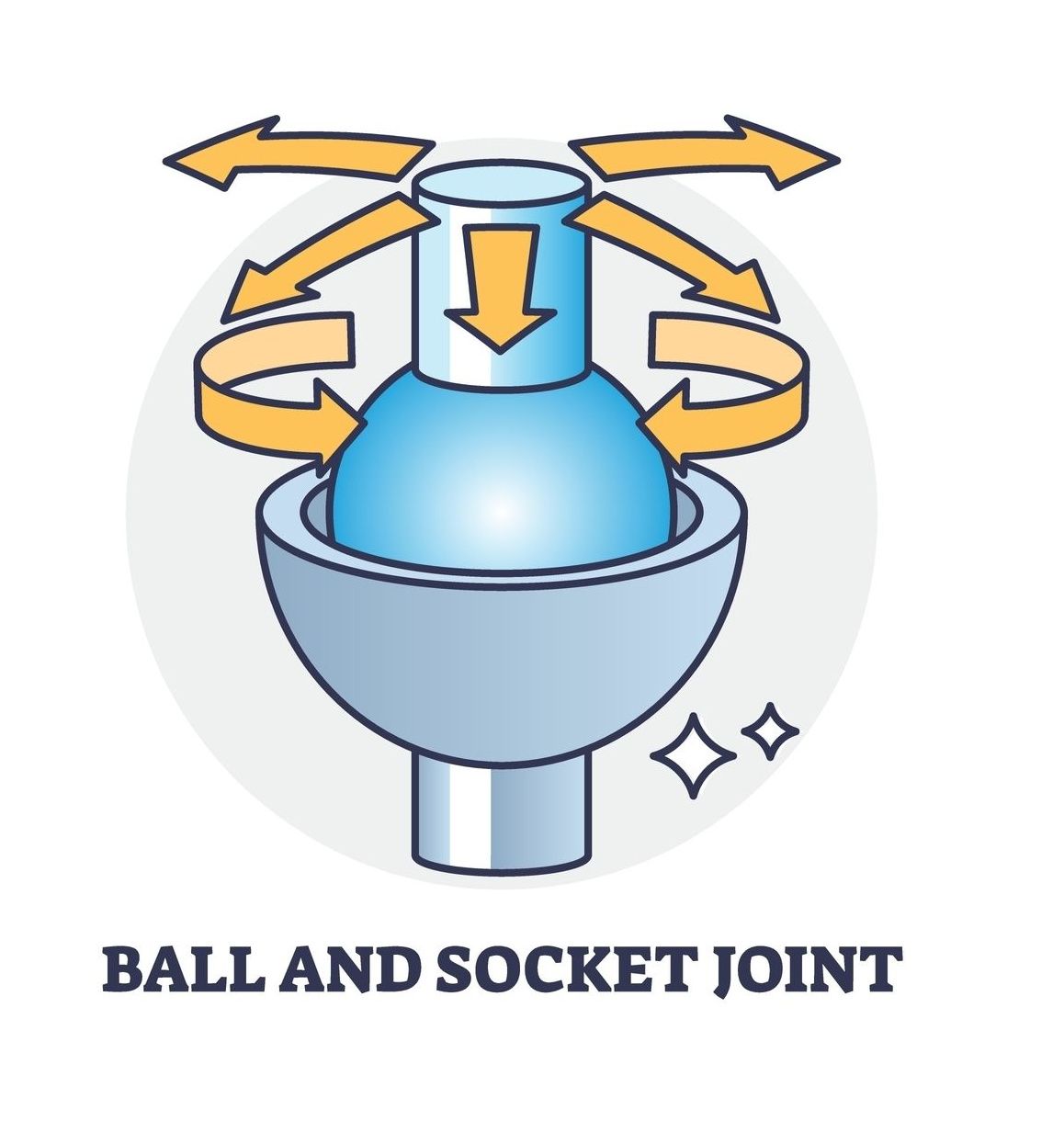
Ball and Socket joints
Ball and socket joints are the joints in our body which allow the most movement. As the name suggests, the joint is made up of a rounded end slotting into a bowl shape. This means that it can move in all direction relatively freely. We call these movements flexion, extension, abduction, adduction, medial rotation, and lateral rotation. The two biggest examples of ball and socket joints are the shoulder and the hip.
Hinge joints
Hinge joints are very simple joints which only allow two movements. As the name suggests, they are very similar to door hinges which means they can either close or open. We call these movements flexion and extension. The main examples of a hinge joint are the elbow and the ankle. Many also agree that the knee should be classed as a hinge joint however it is slightly different.
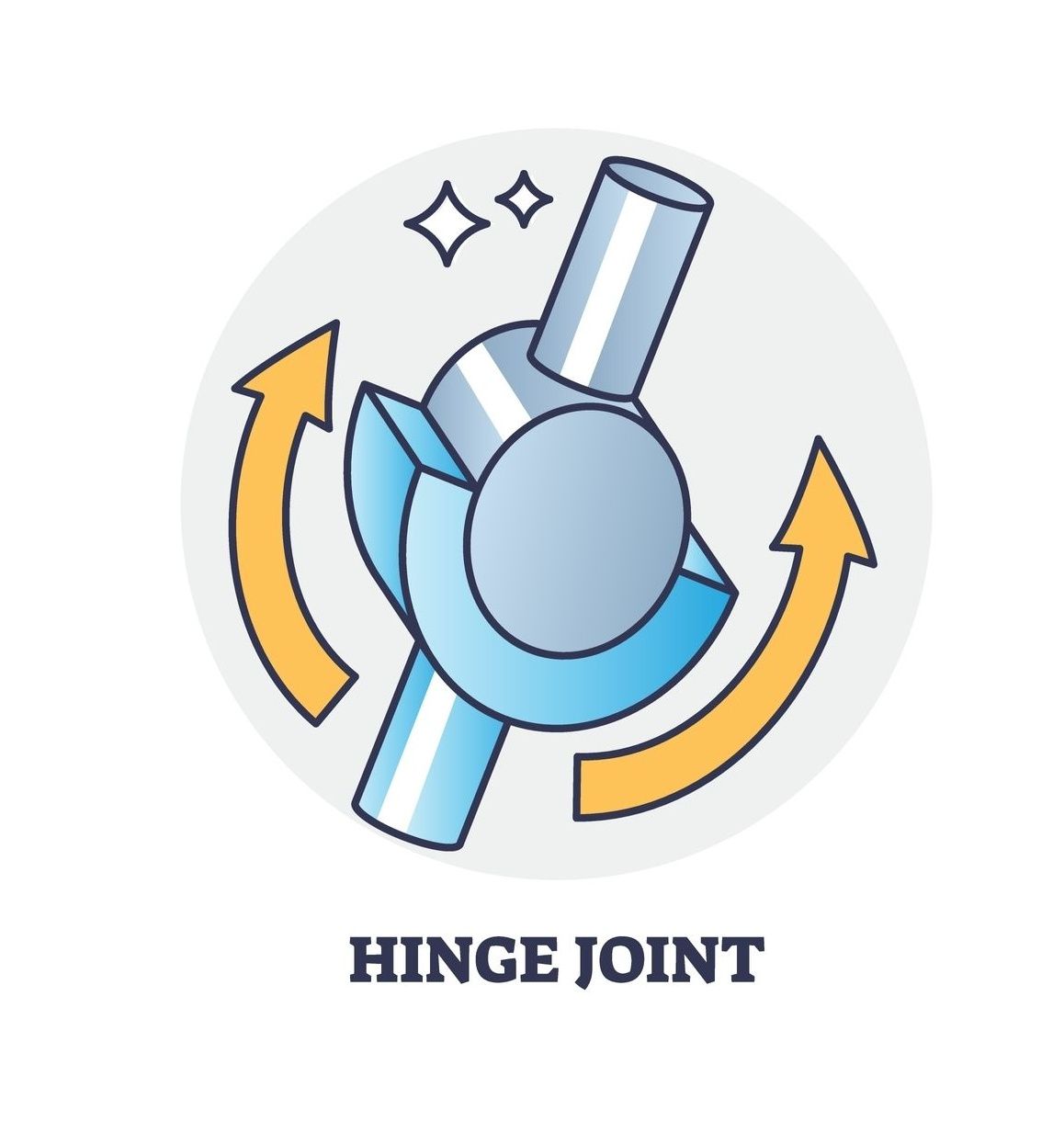
Bicondylar joints
Bicondylar joints are very similar to hinge joints. This is because they can either open or close. However, bicondylar joints become unlocked when you bend (close) them. This allows a small amount of a swiveling motion called rotation. This gives them their alternative name of a modified hinge joint. As mentioned before, the knee if often classified as a hinge joint but it should be classed as a bicondylar joint.
Saddle joints
Saddle joints look very similar to a horse rider sitting on a saddle. If you imagine being on a saddle, you have lean forwards, you can lean backwards, or you could fall off either side. You cannot, however, rotate side to side on it. The joint is much like this meaning it allows four movements being flexion, extension, adduction, and abduction but no rotation. Unlike a ball and socket joint, you cannot have more than one movement at once; this is because the joint locks when you move it one way and will not unlock until you straighten it. The main example of a saddle joint would be the thumb.

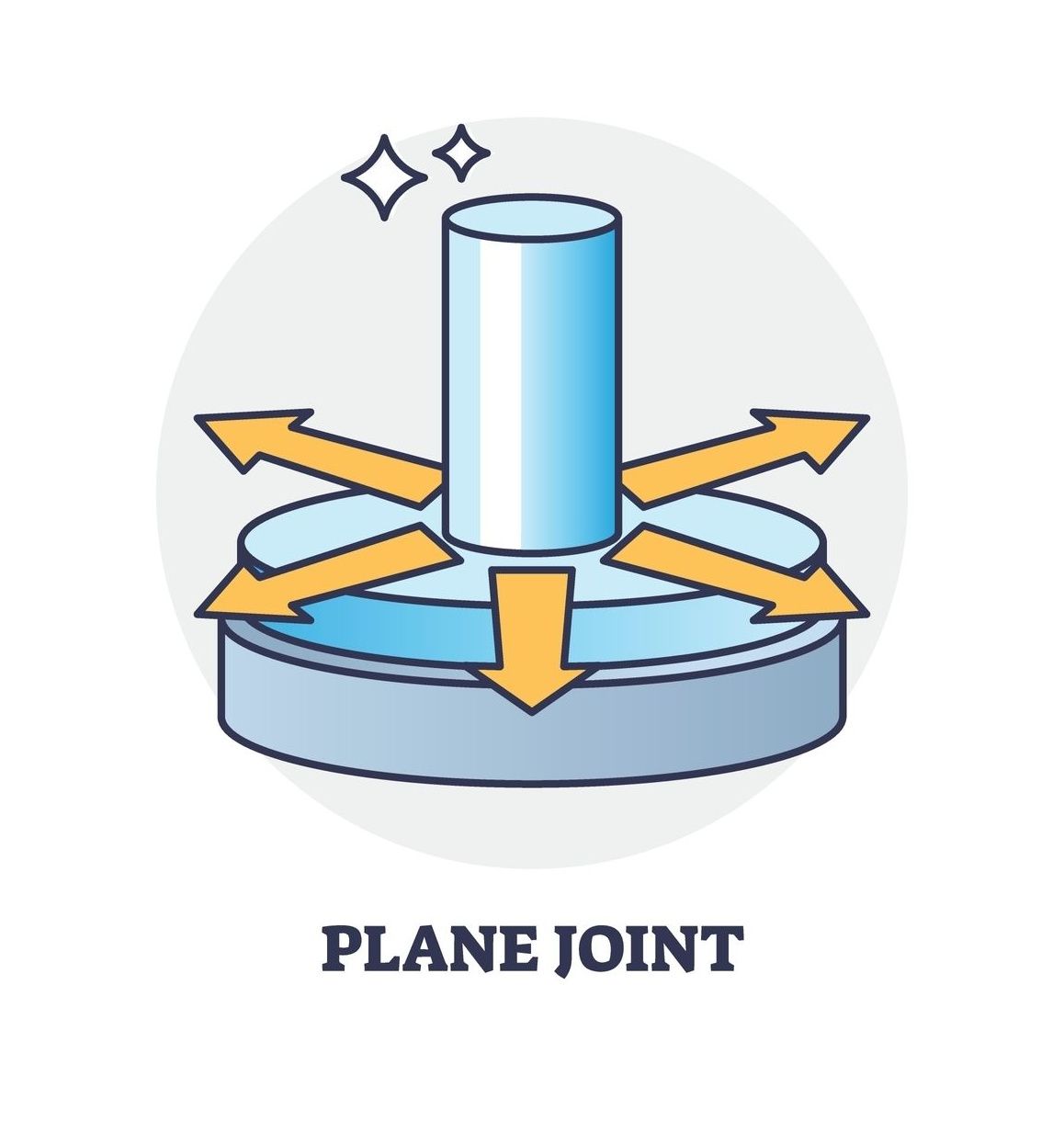
Gliding joints
Gliding joints are joints where the bones slide past each other. Unlike the other joints, the angle of the joint doesn't change much but their relative positions to each other does. These joints are often also known as plane joints. Examples of these joints would be the joints between the tarsal bones as the diagram shows.
Pivot joints
pivot joints are joints where one bone rotates around another. One bone will be sat on top of the other which allows it only two movements being medial rotation and lateral rotation (sometimes left and right rotation).
An example of a pivot joint is the atlantoaxial joint which is the joint between the to two vertebrae of our spinal column.
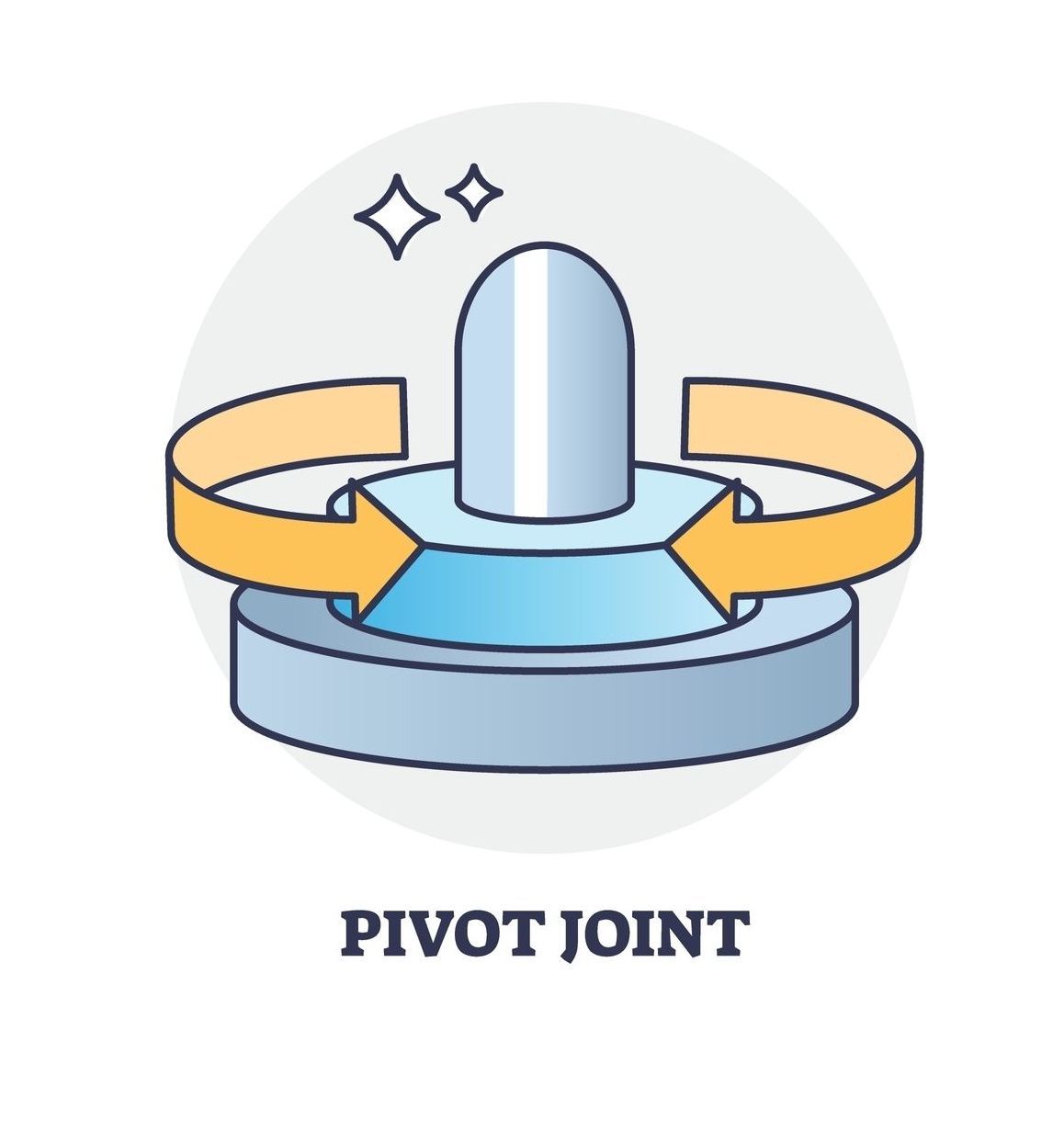
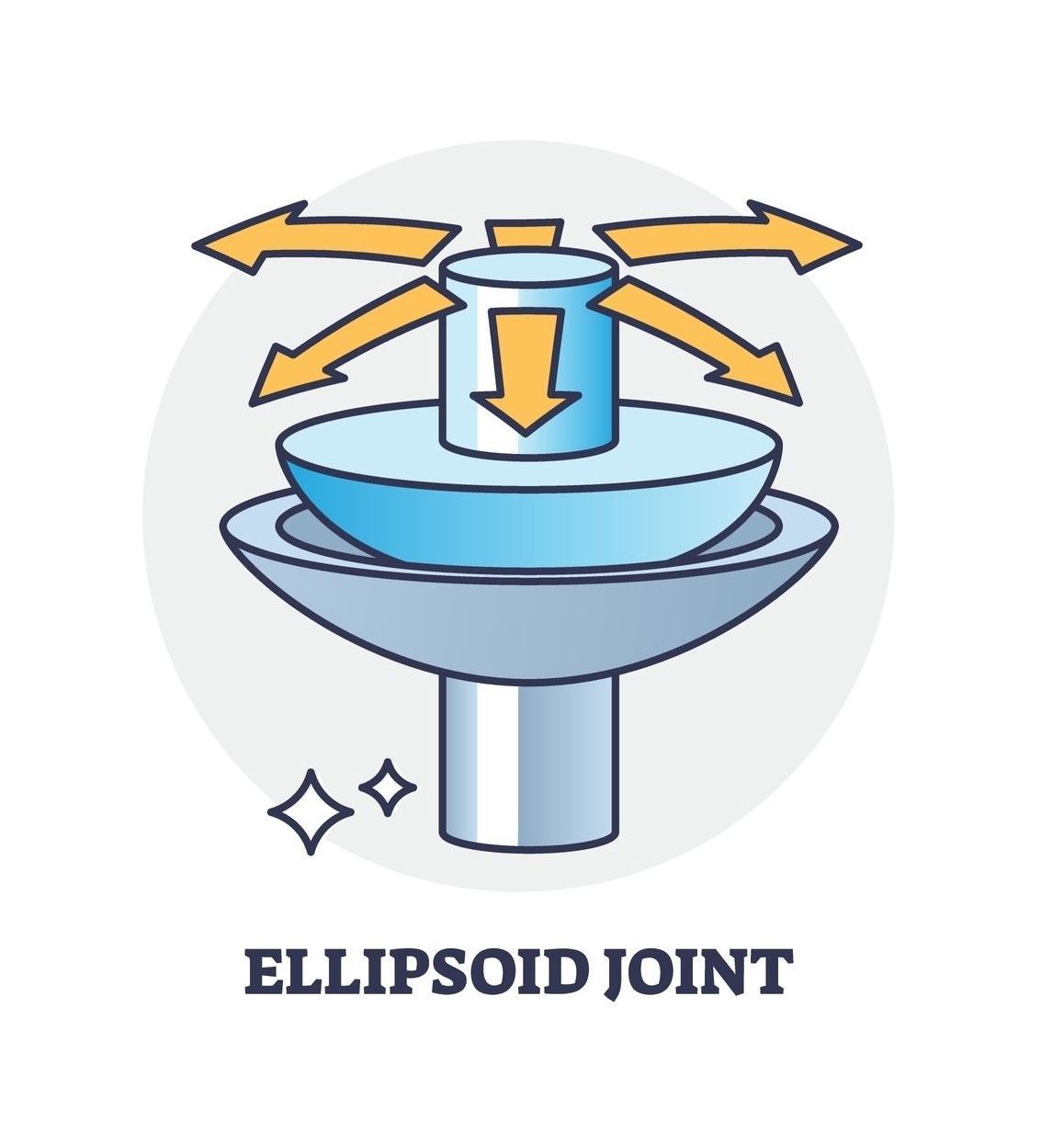
Ellipsoid joints
The final joint type is the ellipsoid joint often known as a condyloid joint. It is like a ball and socket joint but a bit different. This is because it allows the same six movements that the ball and socket joint allows as it has a similar structure. However, the big difference is that it is not designed to allow the rotations. Rotation can occur at an ellipsoid joint but it is not the intended movement. An example of an ellipsoid joint is the radiocarpal joint which is the wrist joint.
The movements
Flexion-
Flexion is a movement where you decrease the angle at a joint. This means that you close it. An example would be bending your elbow. A good way to remember this is by thinking how people 'flex' their muscles- by bending their elbow to show their biceps.
Extension-
Extension is a movement where you increase the angle at a joint. This means that you open it. An example would be straightening your elbow. A good way to remember this is by thinking about an extension of a house- it means to make it bigger.
Abduction-
Abduction is a movement where you take something away from the midline of the body. A good way to remember this is realising that the word contains 'abduct' in it which means to take away.
Adduction-
Adduction is a movement where you add something to the midline of the body. A good way to remember this is realising that the word contains 'add' in it as in adding a limb back to the body.
Medial rotation-
Medial rotation is a movement where you twist something towards the midline of the body. An example of this would be rotating your knee so the toes point towards each other. A good way to remember this is the fact that medial is like 'middle' so you are rotating towards the middle.
Lateral rotation-
Lateral rotation is a movement where you twist something away from the midline of the body. An example of this would be rotating your knee so the toes point away from each other. A good way to remember this is the fact that lateral means across from so you are rotating away from the middle.
The structure
The synovial joint has a few parts.
Capsule-
The capsule is what encloses the joint to prevent the joint collapsing or the synovial fluid escaping. It is made up of ligaments which connect the bone together.
Joint cavity-
This is the space between the bones. It is filled with synovial fluid which lubricates the joint allowing it to move move freely without friction.
Cartilage-
The function of the cartilage is to separate the bones to prevent them from rubbing together. If two bones were to rub against each other it would be very painful and cause damage to the bones to this is in place as a buffer. It also acts as a shock absorber if the bones collide.
Synovial membrane-
The synovial membrane produces the synovial fluid required.
All Rights Reserved | Timeless Performance